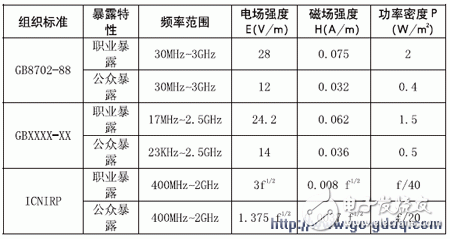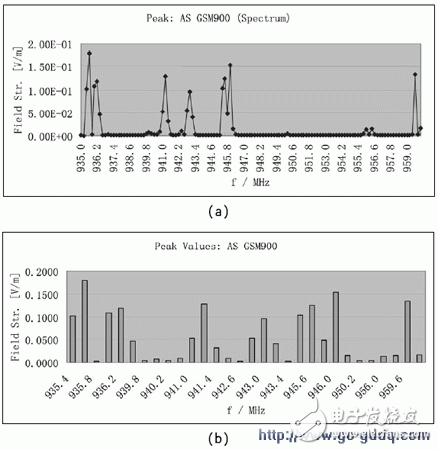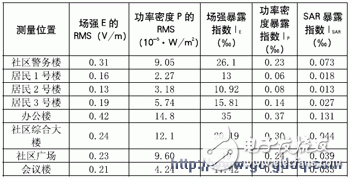So far, human beings have really begun to understand and consciously apply electromagnetic waves for only about 100 years. Modern mobile communication technology has only been developed since the 1920s. The emergence of new radio technologies has greatly promoted the increase of various types of radio transmission equipment. The GSM digital cellular mobile communication system has high spectrum utilization and system capacity. Large and widely used. In order to better serve and meet the increasing demand for mobile phone users, major communication operators have built a large number of cellular base stations. From the high-rise building roofs of the city to the residential quarters, from the mountainous areas to the hills in the countryside, the number of cellular base stations and the density of their coverage are increasing, and people are gradually paying attention to the topic of electromagnetic pollution.
Based on human safety considerations, the World Health Organization (WHO), the International Commission on Non-Ionizing Radiation Protection (ICNIRP), and the American National Standards Institute (ANSI/IEEE) have proposed safety standards for the effects of electromagnetic radiation on humans. China has also promulgated corresponding standards and has established strict regulations on the degree of electromagnetic radiation. In this paper, based on the actual experience accumulated by individuals in the monitoring of electromagnetic field radiation of cellular base stations, the effects of electromagnetic field radiation on human tissue and safety issues are discussed.
1 Radio electromagnetic radiation1.1 Electromagnetic radiation
Electromagnetic wave radiation refers to the phenomenon that energy is emitted from a radiation source into space in the form of electromagnetic waves, referred to as electromagnetic radiation. When electromagnetic radiation passes through the human body, its energy will be absorbed by the human body. If this energy is too large, it will pose a harm to human health. If the human body is exposed to such electromagnetic radiation environment, it will have certain influence.
At present, the sources of electromagnetic radiation sources are generally the following: radar systems, television and broadcast transmission systems, radio frequency induction and medium heating equipment, radio frequency and microwave medical equipment, various electrical processing equipment, communication transmitting stations, satellite earth communication stations. Large power stations, power transmission and transformation equipment, high-voltage and ultra-high voltage transmission lines, subway trains and electric trains, and most household appliances.
1.2 Human tissue exposure indicators
1.2.1 Specific absorption rate
Specific Absorption Rate (SAR) is a measure of the absorption of heat by human tissues and reflects the extent to which electromagnetic radiation affects the human body. SAR is defined as the electromagnetic radiation power absorbed by the organism per unit mass, that is, the absorption rate, in units of W/kg. In this paper, SAR is mainly used to estimate the specific absorption rate at a certain part of human tissue. The relationship between the specific absorption rate SAR and the electric field strength E at this position can be expressed by equation (1):
 (1).
(1).
Where: P is the absorbed power density, and the unit is W/m2;
Ï is the tissue density in kg/m3;
σ is the tissue conductivity;
E is the total rms RMS electric field strength in the measured tissue,
The unit is V/m.
1.2.2 Power Density (P)
Power density refers to the magnitude of electromagnetic waves at a certain point in space, expressed in terms of power per unit area, expressed in W/m2.
2 Current electromagnetic radiation implementation standardsCurrently, international organizations IEEE, FCC, Safety Code 6, and ICNIRP give exposure limits up to 300 GHz for public and occupational exposures.
China's current electromagnetic radiation implementation standards, mainly follow the "Electromagnetic Radiation Protection Regulations" (GB8702-88), "Environmental Electromagnetic Hygienic Standards" (GB9175-88) and "Electromagnetic Radiation Exposure Limits and Measurement Methods", etc. The measurement requirements are different, and the standards chosen in practice are not the same. According to the needs of practical measurement, some contents are shown in Table 1 and Table 2.
Table 1 Human tissue specific absorption rate (SAR) limits

Table 2 RF microwave radiation exposure limits

3.1 Selection of measurement system
We used the portable field strength measurement system TS-EMF from Rohde & Schwarz (R&S) to measure the field strength and power density of the cellular base station. The system consists of an omnidirectional spherical probe antenna (30MHz to 3GHz), R&S FSH3. (100kHz ~ 3GHz) spectrum analyzer and control software R&S RFEX (installed in a laptop) three parts, as shown in Figure 1. The three-axis probe antenna has the characteristics of equal direction, so we do not need to consider the polarization and direction of the transmitting system, and it is not necessary to rotate the antenna for measurement in the measurement.

Figure 1 system connection diagram
3.2 Measurement system work requirements
The working conditions of the measuring system must be strictly in accordance with the working conditions required by the test system. The portable field strength measuring system TS-EMF requires:
(1) The frequency range is from 30 MHz to 3 GHz;
(2) The measurement range is from 1 mV/m to 100 V/m;
(3) Operating temperature is 0 ° C ~ 50 ° C (with battery power);
(4) The relative humidity is 95%.
3.3 Calibration and measurement package settings for the test system
In order to achieve better test accuracy, the TS-EMF test system needs to be separately calibrated. Through calibration, the calibration values ​​of the relevant data for the antenna factor and the connection cable loss will be stored in the calibration package of the RFEX software data. When making measurements, the calibration values ​​are automatically calculated into the measurement results, which fully guarantees the accuracy of the measured values.
Let us set the GSM900 parameter package as an example to make reasonable settings for the main parameters of the measurement system. For the GSM900 cellular system, the measured resolution bandwidth RBW = 200 kHz, the trajectory mode is maxhold, the dwell time DT = "5000 ms", the measurement period is 6 minutes, and the reference level value is 91 dBμV. After reasonable setup and calibration, the RFEX software can automatically test the required result data.
Measurement Control RFEX software provides three different measurement modes: (a) single measurement, (b) mean and peak measurement (6 minutes for cycle), and (c) long-term measurement. Single measurement: usually used to get a quick, general understanding or to display an actual value on site as the basis for discussion. Select single measurement mode, all selected measurement packages will be measured once, and the measurement results will be displayed. In the EXCEL report; mean and peak measurement: This measurement mode is mainly to search for the maximum field strength value of a specific area. Due to the influence of electromagnetic wave propagation under non-ideal environmental conditions, the spatial distribution of field strength will not be caused. In order to measure the maximum field strength outdoors or indoors, this method will be the preferred method.
4 system test methods and data analysis4.1 Measurement location selection requirements
Since the measurement environment often does not reach the ideal state, there are shadow effects and rapid fading of the radiated electromagnetic wave propagation, and the presence of a large number of scattered waves and absorbers around, which leads to the uneven distribution of the field strength. Therefore, the selection of the measurement position is for us. The measurement to be performed is crucial.
The measurement location should be selected within 200m from the base station. When measuring the electromagnetic radiation environment of the cellular base station, it is required to:
(1) Measurement of environmental and climatic conditions should avoid wind, rain, snow, hail weather;
(2) Test points should try to avoid tall buildings, trees, high-voltage wires and traffic trunks;
(3) When measuring ground, the height of the measurement shall be 1.7 m. When measuring high-rise buildings, it shall be selected on the balcony or indoors;
(4) The measurement time should be selected during the peak period of the user's use of the mobile phone;
(5) The reading is 5 consecutive readings for each measuring point, each measuring time is not less than 15s, and the maximum value of the steady state is read. However, when the measurement fluctuation is too large, the measurement time should be extended appropriately.
4.2 Radiation measurement
After the connection and setting of the above steps, combined with the selection requirements of the measurement position, this paper selects the radiation test of the Jinzhong Community of Anshun Municipal Committee as an example. The Jinzhong community has a relatively dense population. The government offices and the daily life of the people are located in this area. At present, the network of China Unicom and China Mobile's GSM900MHz frequency band covers the entire community, and people are exposed to such an environment most of the time. And we often receive complaints from the community about the impact of electromagnetic radiation on the base station. Thus, depending on the situation, we selected eight different locations in densely populated areas and used the portable field strength measurement system TS-EMF to measure the field strength and power density of the cellular base station.
Through multiple measurements of the GSM900 band signal, the maximum field strength is measured in an office building 50m away from the base station. In the office building, the measurement map obtained by the mean and peak measurement modes is shown in Figure 2. Figure (a) shows the peak intensity spectrum of the signal under test in the GSM900 band at this location, and Figure 2(b) shows the peak distribution of the field strength of the signal under test in the GSM900 band at that location.

Figure 2 (a) Field strength peak spectrum (b) Field strength peak distribution (GSM900MHz band)
4.3 Analysis of measurement results
In addition to measuring the electric field strength and power density, we have increased the calculation of SAR to evaluate the effect of radiation on human exposure. This paper focuses on the impact of SAR on the human brain. It can be known from the formula (1) that the electric field intensity E in the human body tissue can be measured by measurement, and other tissue density Ï and tissue conductivity σ about the human brain tissue can be obtained by querying in the FCC database, as shown in Table 3.
Table 3 Human brain tissue ionization properties

At present, the field intensity exposure index IE, the power density exposure index IP, and the SAR exposure index ISAR are generally used to measure the influence of electromagnetic radiation on human exposure. IE=E/E0, IP=P/P0, ISAR=SAR/SAR0. Among them, E0, P0, and SAR0 are the limits specified in Table 2 of China. We separately sorted the data measured in 8 locations in the community, and the results are shown in Table 4.
Table 4 Maximum peak relative limit thousandth ratio

We found that the field strength and power density maximum appeared in the office building, the electric field strength was 0.42 V/m, which is 35é™åˆ¶ of the limit value; the power density is 14.8 & TImes; 10-5W/m2, which is the limit value of 0.37. ‰; SAR is 1.31 & TImes; 10-4 W/kg, which is 0.131 é™åˆ¶ of the limit value. The minimum electric field strength is measured at the residential building No. 2, the electric field strength is 0.13V/m, which is 10.9‰ of the limit value; the power density is 3.18&TImes; 10-5W/m2, which is the limit value of 0.08‰; SAR It is 1.28 & TImes; 10-5 W/kg, which is 0.013 é™åˆ¶ of the limit value.
The data of this test show that the electric field strength, power density and specific absorption rate SAR of the Jinzhong community of the Municipal Party Committee are far lower than GB8702-88 and the "Electromagnetic Radiation Exposure Limits and Measurement Methods" standard. Therefore, the electromagnetic radiation of the community will not cause harm to the human body. Since the measured cell is a relatively dense community of cellular base stations in China, we can preliminarily conclude that the existing cellular base stations in China do not cause harm to the human body due to electromagnetic radiation in compliance with national standards.
5 ConclusionThis paper briefly discusses the influence of electromagnetic radiation of cellular base stations on human exposure, and measures the electric field strength, power density and specific absorption rate SAR of each measurement location of typical cells. The experimental results show that these parameters meet the requirements. From this we can analyze that the cellular mobile communication base station is safe to the human body under the premise of strictly complying with national standards. However, for the measurement location, there are other radio communication systems such as GSM1800, WLAN, etc., and it is necessary to comprehensively evaluate its impact on the human body.
Fiber Optic Enclosure,Corning Fiber Optic Enclosure,Fiber Optic Enclosure Box,Plastic Fiber Optic Enclosure
Huizhou Fibercan Industrial Co.Ltd , https://www.fibercannetworks.com